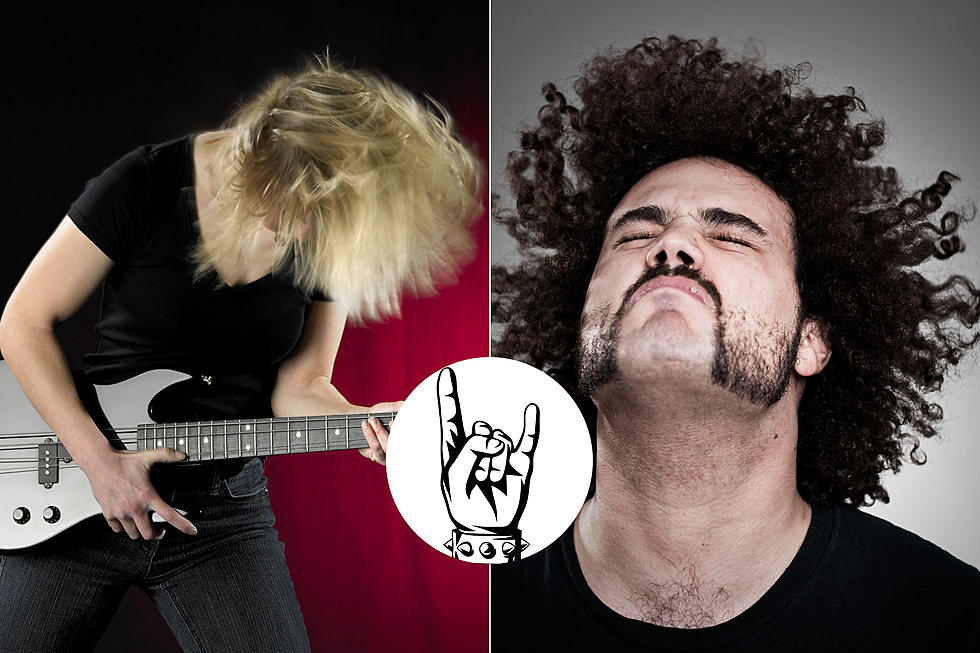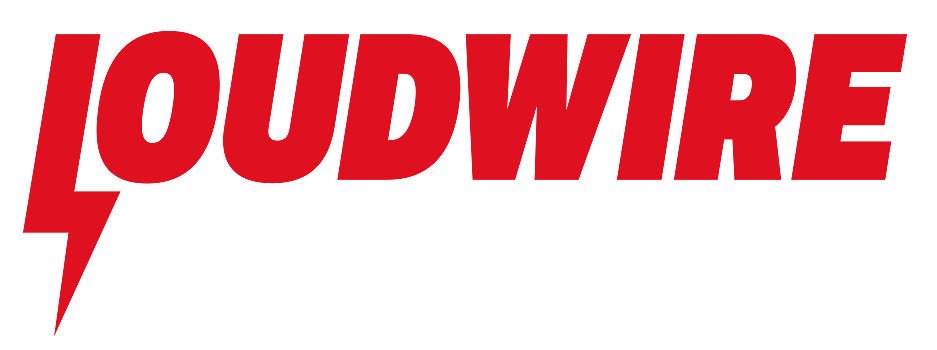
Who Originated Headbanging?
The music grabs you, you feel compelled to move. Suddenly, your head starts nodding front to back repeatedly. You, my friend, are headbanging, a move popularized over the course of the rock 'n' roll era, but where did this practice start? Was it the fans? Was it a particular artist? Did it even precede the rock era? Let's dig into the origins of headbanging!
Where Did Headbanging Start?
While we tend to associate headbanging with heavy metal music, the origins of the move, which often is performed in synchronization with a beat or rhythm, actually pre-date the rock era. It's most often been tied to Islamic devotional Sufi music that dates back centuries. Per Spin, it was used in the 600-year-old Qawwali tradition as well as among dervishes in Iran's Kurdistan Province. The performances are often meant as a show of tribute to Allah, Islamic prophets or Sufi saints with headbanging among the many rhythmic motions done throughout the movement.
One of the more modern "headbangers" was Pakistani vocalist Nusrat Fateh Ali Khan, who often had his head nodding throughout performances.
Nusrat Fateh Ali Khan, "Haq Ali Ali Hag"
Who Originated Headbanging in the Rock Era?
The simple answer here is there is not one particular person credited as the originator. In fact, there's even a debate as to whether headbanging started with an artist or with the fans as a way of expressing what they were feeling from a particular artist.
There are several notable headbangers throughout the history of rock though, and we'll lay out some of the claims to the headbanging originator title.
Many will point to Black Sabbath and the dawn of heavy metal as a key turning point for headbanging. As can be seen clearly in the video below, Ozzy Osbourne is whirling his head around freely during a December 1970 performances of Black Sabbath's "War Pigs" during a show at the Olympia in Paris.
Black Sabbath, "War Pigs"
But there was another heavy band just getting started around the same time called Led Zeppelin. In fact, their 1969 show at the Boston Tea Party venue featured several audience members in the front row headbanging along to music, and there are some who feel that the term "headbanger" first became popular when describing the band's 1969 tour. There's also additional video that's surfaced from Jan. 9, 1970 that shows audience members headbanging along to their performance of "Communication Breakdown." Not to mention, you'll notice drummer John Bonham clearly moving his head back and forth, while Robert Plant gets a few headbanging nods in as well.
Led Zeppelin, "Communication Breakdown"
But was there headbanging prior to 1970? That's where it gets a little more interesting, as there are definitely some movements that seem to suggest headbanging, though the acts of headbanging perhaps hadn't clearly been defined as of yet.
Stephen Hudson, while preparing to present a paper for the Modern Heavy Metal conference in Finland, traced back some headbanging moments even further.
He noted Blue Cheer who emerged as one of psychedelic rock's loudest bands, as getting in on the headbanging dating back to 1968. Below, you'll see a video of the group's appearance on the television show American Bandstand in which drummer Paul Whaley appears to be head-bobbing along to the music.
Blue Cheer Perform "Summertime Blues" on American Bandstand
But Hudson can even top that when it comes to early headbanging. Taking it back to the '50s, he notes a Chuck Berry performance in France. And while Berry does some head shaking, the performance of "Johnny B. Goode" sees a more clearly headbanging bassist in the background rocking along to the song.
Chuck Berry Performs "Johnny B. Goode" in France (1958)
You can chalk another one up for the fans, who also beat the 1970 benchmark during Cream's 1968 farewell concert. As the band rocks out the riff-heavy "Sunshine of Your Love," audiences members can be clearly seen headbanging along to the track.
Cream, "Sunshine of Your Love" (Farewell Concert 1968)
But could it be the earliest headbanger of all was actually "The Killer"? While it may not be headbanging in the form we tend to think of, early Jerry Lee Lewis performances often saw the musician's energetic stage performances forcing him to nod his head frequently in order to remove the curls of hair from his face as they shook loose during "Whole Lotta Shakin' Going On." And if not Lewis, his fans definitely had the headbang down while listening to him, as seen below.
Jerry Lee Lewis Performs "Whole Lotta Shakin' Going On"
Who Helped to Popularize Headbanging?
While there are plenty of instances of bands and fans headbanging through the years, the move has definitely become more commonplace as heavy music started to make inroads into the public collective. So who helped popularize headbanging? One of the most commonly mentioned names is AC/DC guitarist Angus Young. In addition to his recognizable schoolboy outfit and his duck walk, Angus can often be seen headbanging along to the music he plays during shows.
AC/DC Live in London 1977
Twisted Sister's Dee Snider also laid claim to being a headbanging originator, telling a fan on the Twitter social media platform that he did make the claim, noting, “I did. But it wasn’t intentional. I would throw my head forward, my hair would cover my face, so I’d throw my head back to get it out of the way. I believe it was the fanzine Kick Ass Monthly in ’78 that said Angus Young and I were the first. I just hated all that hair in my face.”
There have been others to lay claim to the "headbanger" title, with Lemmy of Motorhead noting in The Decline of Western Civilization II documentary that the term may have been derived from his band, referencing "Motorheadbanger." And you've also got Deep Purple's Ian Gillan was was once asked if he invented headbanging. He responded, "That's a definite possibility." Deep Purple's run also coincided with the early days of Black Sabbath and Led Zeppelin.
READ MORE: 10 Try Not to Headbang Challenges
Is Headbanging Safe?
There are countless accounts of headbanging eventually catching up to rock musicians. Whether it be Cliff Burton complaining about neck pain in the '80s or Evanescence guitarist Terry Balsamo suffering a stroke that doctors speculated may have come from his frequent headbanging in 2005, there are reasons for artists to be careful when it comes to the act of headbanging.
Studies have shown headbanging to cause minor brain damage and muscle tension when done in excess. Paramore's Hayley Williams relayed to Jimmy Fallon on The Tonight Show that she had "headbanged the curvature out of my neck" over the course of her career. And Megadeth leader Dave Mustaine has revealed that he has spinal stenosis that came from his years of headbanging. So if you're going to headbang, do so with caution. Back in 2017, Excision offered a neck stretching guide to fans so that their headbanging fans could avoid the soreness that would come after one of their performances.
13 of the Best Signature Rock + Metal Stage Moves
Gallery Credit: Chad Childers, Loudwire
More From Loudwire









